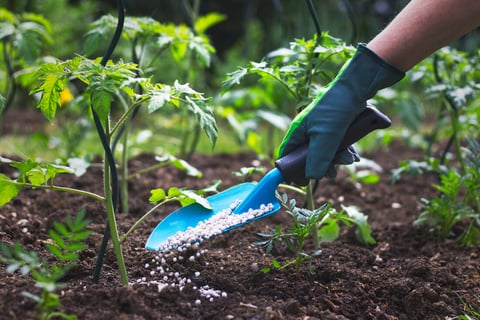The area where the trunk and the root come together is called the root collar. At this point of contact, there is a flare called the root flare. Its placement holds importance as it should be visible and exposed to air. Covering a tree’s root flare restricts its access to the air, making it susceptible to stresses. Arborists use the process of root collar excavation to treat various health issues of a tree.
Why are root flares significant on my trees and shrubs?
It is believed that around eighty percent of trees in urban areas have had their root flares covered by dirt and mulch during planting. The root flare comprises living tissues that transport nutrients and water, gathered by roots, to the entire tree. If the root flare is damaged and cannot transport the nutrients, it will lead to poor growth of leaves and branches of the tree. The most apparent signs are insufficient growth of leaves and poor canopy growth. Root flare damage may also cause disease, insect infestation, and dieback. A damaged root flare area may also cause the tree to become unstable.
If a tree is planted too deep, the mulch covers the root flare. The moisture from the mulch softens the tree bark and allows insects to penetrate the tree. Too much mulch may also hide the girdling roots, which chokes the tree of water, nutrients and oxygen. Poor planting techniques are usually the culprit behind the girdling roots.
The process explained
Root collar excavation is the best option available to treat a tree with deep roots. The process can be done by carefully using small digging tools and a brush. The dirt should be removed carefully and slowly so as to not nick the bark. Expose the trunk area where it starts to taper and make the main anchoring roots of the tree visible. In general, around 6 to 12 inches of the mulch or soil must be removed from around the root collar region.
If you don't have the time to do this, you can the services of a certified arborist. With the help of the right tools, an arborist can ensure that the tree’s root flare is not damaged in the exposure process. They also use AirSpade, a hand-held soil excavation tool connected to a large air compressor, to blow a high-pressure air stream. It helps remove or loosen the soil around the root collar without damaging a tree’s delicate root system, underground pipes, and hard surfaces.
What to expect from AirSpade work?
Soil preparation: Before the AirSpade work, the soil needs to be watered for one or two days. It helps soften the soil.
Clearing the work area: Before starting the process, any grass, ivy, shrubs, or flowers, must be removed from the base of the tree. The work area is usually one to two feet from the bottom of the tree.
Backfilling the excavated area: After completing the work, it needs to be filled with coarse mulch.
About Seacoast Tree Care
If you are looking for certified arborists to take care of your tree removal needs, Seacoast Tree Care is your one-stop destination. We offer a complete range of tree care and removal services in New Hampshire, Maine, and Massachusetts. We are experts in tree pruning, cabling, fertilizing, preservation, pest control, and root collar excavation. To get information, call us at 603-431-0101 or 978-225-6644, or email us at info@seacoasttreecare.com.


